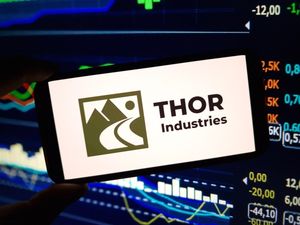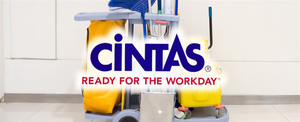
Richmond, VA – September 25, 2025 – CarMax Inc. (NYSE: KMX), the nation's largest retailer of used cars, experienced a dramatic stock plunge today following the release of its fiscal second-quarter earnings report for 2025. The company's shares plummeted by as much as 25% during trading, settling around a 19-23% decline, making it the biggest decliner within the S&P 500 index. This significant downturn was triggered by a substantial miss on both earnings per share (EPS) and revenue expectations, signaling a challenging environment for the used car market and raising concerns for investors.
The immediate implications are clear: investor confidence in the used car sector has been significantly shaken. CarMax's performance suggests a weakening demand and profitability across the industry, driven by persistent affordability challenges and high interest rates. The company's announcement of a $150 million cost-cutting plan over the next 18 months underscores the severity of the situation, while analysts have swiftly responded with downgrades and revised price targets. This downturn has pushed CarMax's stock to multi-year lows, reminiscent of the early days of the COVID-19 pandemic, and raises questions about the sector's near-term recovery.
Detailed Coverage: A Quarter of Significant Misses and Mounting Pressures
CarMax's fiscal second-quarter 2025, which concluded on August 31, 2025, painted a bleak picture of the current automotive retail landscape. The company reported total net revenues of $6.59 billion, a 6% year-over-year decline, falling significantly short of analyst forecasts that ranged from $7.0 billion to $7.07 billion. Even more concerning was the reported EPS of $0.64, a considerable drop from $0.85 in the prior-year quarter and well below the consensus estimates of $1.03 to $1.06, representing a negative surprise of nearly 38%.
Operational metrics further highlighted the struggles: retail used vehicle unit sales decreased by 5.4% to 199,729 units, with comparable store sales declining by 6.3%. Total revenue from used vehicle sales fell 7.2% to $5.27 billion. Wholesale vehicle unit sales also experienced a 2.2% decline. While the retail gross profit per used unit remained relatively stable at $2,216, the overall total gross profit decreased by 6% to $718 million.
A critical factor in the disappointing results was the performance of CarMax Auto Finance (CAF). Income from CAF decreased by 11.2% to $102.6 million, primarily due to a significant increase in the provision for loan losses, which surged to $142.2 million from $112.6 million in the prior year's quarter. This increase was largely attributed to worsening performance among 2022 and 2023 loan vintages, indicating a deterioration in credit quality for a segment of borrowers. The allowance for loan losses now stands at 3.02% of auto loans held for investment.
This challenging quarter follows a mixed preceding period. Fiscal Q4 2024 saw a slight revenue dip but a modest increase in retail used unit sales. Fiscal Q1 2025 (ended May 31, 2025) had shown a more positive trajectory, with EPS increasing by 42.3% and retail used unit sales up 9.0%, accompanied by a record high gross profit per retail used unit. However, the Q2 results represent a sharp reversal, suggesting that the headwinds have intensified significantly.
Key players involved in the earnings call included Bill Nash, President and Chief Executive Officer, who acknowledged the difficult quarter but expressed confidence in the company's long-term strategy and cost-reduction initiatives. Enrique Mayor-Mora, Executive Vice President and Chief Financial Officer, detailed the financial impacts, attributing the EPS decrease primarily to lower volume and the CAF loss provision. The immediate market reaction was a sharp sell-off, with analysts quickly revising their outlooks and highlighting concerns about muted demand, affordability challenges, and credit quality issues.
Ripple Effects: Winners, Losers, and Industry-Wide Implications
CarMax's (NYSE: KMX) disappointing Q2 2025 earnings are not an isolated event but rather a strong indicator of broader pressures within the used car market. This performance will undoubtedly create ripple effects, distinguishing potential winners from likely losers across the automotive retail and financing sectors.
Potential Losers: Companies most vulnerable to CarMax's struggles are those with similar business models or significant exposure to the same market challenges. Pure-play used car retailers, such as Carvana (NYSE: CVNA) and Vroom (NASDAQ: VRM), operate in the same highly competitive and challenging environment. If the largest player is struggling with sales volume and profitability due to high interest rates, tight inventory of desirable used cars, and weakening consumer demand, it signals an industry-wide problem that could exacerbate difficulties for these already challenged companies. Furthermore, financiers with high exposure to subprime auto loans face increased risk. CarMax's significant increase in its provision for loan losses, particularly from older loan vintages, underscores a broader risk of deteriorating credit quality across the auto loan market. Any entity, whether an independent finance company or a retail operation with an in-house lending division, heavily reliant on subprime borrowers could see similar financial strain.
Potential Winners: Conversely, certain companies might be better positioned to navigate these challenges or even gain market share. Diversified automotive retailers like AutoNation (NYSE: AN), Lithia Motors (NYSE: LAD), Penske Automotive Group (NYSE: PAG), Sonic Automotive (NYSE: SAH), and Asbury Automotive Group (NYSE: ABG), often benefit from a mix of new car sales, used car sales, and robust service and parts departments. While their used car segments may face pressure, their new car sales (which are seeing a return to pre-pandemic levels for overall units) and higher-margin service operations can provide a crucial financial cushion. AutoNation, as CarMax's largest competitor by revenue, might leverage its scale and diversified model more effectively. Online marketplaces and listing platforms such as Auto Trader (LSE: AUTO), Cars.com (NYSE: CARS), TrueCar (NASDAQ: TRUE), and CarGurus (NASDAQ: CARG), which act as facilitators rather than holding inventory, are less directly exposed to inventory depreciation and financing risks. If dealerships face pressure to move inventory, they may increase reliance on these platforms for advertising. Additionally, companies with strong financial health and low debt will be better equipped to weather downturns and potentially acquire distressed assets or competitors. Niche players focusing on older, more affordable vehicles, or those effectively capitalizing on the growing used EV market, could also find growth opportunities.
Wider Significance: A Bellwether for the Used Car Economy
CarMax's (NYSE: KMX) Q2 2025 earnings report is more than just a company-specific setback; it serves as a critical bellwether for the entire used car market and reflects several pervasive industry trends. The significant decline in sales volume and profitability at the nation's largest used car retailer underscores a broader weakening of consumer demand, primarily driven by persistent inflation and elevated interest rates. These macroeconomic factors have made auto financing less affordable, pushing many potential buyers out of the market for discretionary, big-ticket purchases like vehicles.
The report also highlights the ongoing normalization of used car prices. After a period of unprecedented appreciation, both retail and wholesale used car prices are experiencing declines, with average listing prices falling to approximately $25,512 in September 2025. This downward pressure on pricing, coupled with declining unit sales, squeezes margins across the industry. The increase in CarMax's loan loss provisions, particularly from its 2022 and 2023 loan vintages, signals a tightening credit environment. This suggests that consumers, especially those with subprime credit, are facing increased financial strain, which could lead to higher delinquency rates across the auto lending sector and further tighten lending standards for all buyers.
Potential ripple effects extend across the automotive ecosystem. Competitors, particularly other large used car retailers and online platforms, are likely to face similar pressures, intensifying the fight for market share in a shrinking demand pool. Companies partnering with CarMax, such as third-party finance providers and extended protection plan (EPP) providers, could see reduced business volumes and increased risk exposure. The auto lending sector, in particular, will be closely watching CarMax's credit performance as an indicator of broader systemic risk.
Regulatory and policy factors also play a role. New 25% tariffs on imported automobiles and auto parts, effective in April and May 2025, are expected to increase new car prices, which could paradoxically drive more consumers towards the used car market, despite current downward trends. However, this also introduces significant uncertainty. The vacating of the FTC CARS Rule means dealers are not currently subject to its stricter disclosure requirements, though this could change. Furthermore, the expiration of federal tax credits for used electric vehicles at the end of September 2025 could impact demand and pricing in the growing used EV market.
Historically, the automotive retail industry is highly cyclical and sensitive to economic fluctuations. The Great Recession (2008-2010) saw new vehicle sales plummet and a credit freeze that severely impacted consumer purchases, leading to government bailouts and bankruptcies for major automakers. During the Great Depression, new car sales fell by 75%, forcing companies to adapt to budget-conscious consumers. These historical precedents emphasize that effective inventory management and accessible consumer financing are paramount for survival in challenging economic climates. Companies that can adapt quickly to changing consumer demands and economic realities are best positioned for long-term success.
What Comes Next: Navigating a Shifting Landscape
The path forward for CarMax (NYSE: KMX) and the broader used car market is fraught with both challenges and potential opportunities, demanding strategic pivots and careful adaptation. In the short term (late 2025 - early 2026), CarMax faces continued headwinds. Analyst expectations for fiscal 2026 EPS have already been reduced by 15-20%, with a recovery timeline of 6 to 18 months anticipated, heavily dependent on macroeconomic improvements. The company's stock is likely to remain volatile as investors digest the Q2 results and monitor the effectiveness of its strategic responses.
For the used car market as a whole, prices are expected to stabilize or experience gentle declines, with wholesale prices already falling and retail prices anticipated to drop by another 5% by mid-2026. While new car production recovery is increasing overall used car inventory, the supply of quality 3-5 year old vehicles remains somewhat constrained. High interest rates, averaging 8.5% for used car loans, will continue to be a significant barrier to affordability, particularly for younger buyers.
In the long term (2026 and beyond), a gradual price normalization is expected, with only slight declines into 2027. The global used car market is projected for substantial growth, reaching $3.1 trillion by 2035 at a CAGR of 6.70%. The growing influx of Electric Vehicles (EVs) into the used market will necessitate adjustments in reconditioning and valuation models, presenting both opportunities and challenges related to battery health and charging infrastructure. A shrinking "car parc" (the total number of vehicles in use) of younger used vehicles, a legacy of reduced new car sales during the pandemic, will intensify competition for desirable stock.
Strategic pivots and adaptations are crucial for CarMax and its competitors. CarMax has announced a plan to reduce selling, general, and administrative (SG&A) expenses by at least $150 million over the next 18 months, aiming for improved operational efficiency. The company is also implementing more selective vehicle purchasing to optimize inventory mix, deploying dynamic pricing algorithms, and enhancing its omnichannel retail strategy. A new "Wanna Drive?" marketing campaign aims to boost consumer awareness. Competitors are also integrating digital sales, refining inventory sourcing, and focusing on affordability.
Market opportunities include the persistent demand for affordable options driven by high new car prices and economic uncertainty, continued growth in digital sales, and the expanding used EV market for retailers who can effectively manage these vehicles. Potential interest rate cuts in 2026 could also stimulate demand. However, challenges remain significant: high financing costs, ongoing economic uncertainty, intense competition, and the execution risks associated with CarMax's strategic pivots. The increasing loan loss provisions for CAF are a particular concern.
Potential scenarios and outcomes for CarMax and the industry include:
- Baseline Recovery: CarMax's cost-cutting and strategic adjustments gradually stabilize performance over 6-18 months, with digital investments yielding returns. The used car market experiences a measured recovery with moderate economic growth.
- Upside Scenario: A stronger-than-expected economic recovery and faster interest rate cuts boost consumer confidence. CarMax's strategic pivots allow it to rapidly gain market share, and improved credit health strengthens CAF's contribution.
- Downside Scenario: Persistent high interest rates and worsening economic conditions further suppress consumer spending. Loan loss provisions continue to rise, significantly impacting profitability, and CarMax struggles to attract budget-conscious buyers, leading to prolonged underperformance.
Wrap-Up: A Cautious Road Ahead for CarMax and the Used Car Market
CarMax's (NYSE: KMX) fiscal Q2 2025 earnings report delivers a stark message: the used car market is navigating a period of significant turbulence. The substantial miss on both revenue and earnings, coupled with a dramatic stock decline, underscores the severity of current market headwinds. Key takeaways include declining sales volumes across retail and wholesale, persistent pressure on profitability, and, most notably, a concerning increase in loan loss provisions within CarMax Auto Finance (CAF), signaling deteriorating credit quality among certain loan vintages.
Moving forward, the market remains challenging. High interest rates continue to erode consumer affordability, while inflation concerns dampen discretionary spending. The normalization of used car prices, after years of appreciation, is putting pressure on margins. CarMax's response, including a $150 million cost-cutting initiative and a renewed focus on operational efficiency and its omnichannel strategy, is a necessary pivot. However, the success of these measures will be heavily contingent on broader macroeconomic improvements, particularly a moderation of interest rates and a rebound in consumer confidence.
The lasting impact of this quarter's performance could be a recalibration of growth expectations for the entire used car retail sector. CarMax, as an industry leader, serves as a bellwether, and its struggles suggest that other players face similar, if not greater, challenges. The increased scrutiny on auto lending practices and credit quality will likely persist, potentially leading to tighter lending standards across the board.
For investors, the coming months will demand vigilance.
- Consumer Demand and Affordability: Any signs of easing interest rates or improving consumer sentiment could provide a much-needed boost to sales.
- Effectiveness of Cost-Cutting: Monitor CarMax's subsequent earnings reports for tangible evidence of the announced SG&A reductions impacting the bottom line.
- CAF Performance: The trend in loan loss provisions and delinquency rates will be a critical indicator of the company's financial health and the broader credit market.
- Market Share: Observe whether CarMax can stabilize or grow its market share in an intensely competitive environment.
- Used Vehicle Pricing: While CarMax aims for consistent per-unit margins, overall pricing trends will still influence total revenue.
While the stock's current valuation might appear attractive to some long-term investors, the near-term outlook remains cautious. Recovery for CarMax is anticipated to be a multi-quarter process, and investors should be prepared for continued volatility as the company and the broader used car market navigate this complex economic landscape.
This content is intended for informational purposes only and is not financial advice





